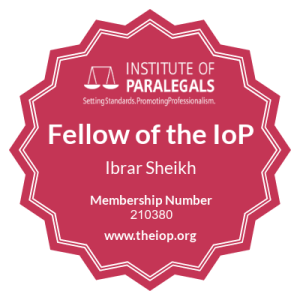6 Steps to Financial Resolution
There is no hard and fast rule. The Court will apply a number of statutory factors which include the age, income earning capacity, responsibilities of the parties, their needs, the length of the marriage and the parties’ resources including their pensions. The interests of minor children always come first so that providing accommodation for them will be a priority.
Note: the court process for obtaining a Financial Order used to be known as the Ancillary Relief process. So, you will find many old articles and forum posts on this website that talk about Ancilllary Relief.
Step 1 – Consider Mediation
Mediation is generally accepted as a more cost-effective way of resolving disputes than going to court. Because of this the courts now require that you at least find out about mediation and consider the benefits of mediation before you can apply to court for a Financial Order.
You cannot apply to court for a Financial Order unless you have a completed and signed Form FM1 from a mediator to say that you have attended a Mediation Information and Assessment Meeting. The form will detail why you or the mediator feel that mediation is not suitable in your case.
Step 2 – Apply to court
An application (Form A) for Ancillary Relief can be issued by either party to a divorce. There is a simple form to complete and Court fee to pay. The Court issues the application; automatically makes an order for documents to be prepared by both sides; lists the matter for a First Appointment in 12 to 16 weeks’ time; and sends copies of all the paperwork to the Respondent to the application within 5 days. If there is an application for a transfer of property order or for pension provision, the Applicant also has to arrange service on any Building Society or Pension Provider.
Step 3 – Financial Disclosure on Form E
A lengthy and comprehensive explanation of your financial situation which has to be completed in detail and sworn in front of a solicitor who is not involved in the case. Certain documents have to be attached such as payslips, a valuation of the matrimonial home, 12 months bank statements, credit card statements, detailed information about any pensions including any SERPS or additional state pension entitlement and any other documents which help to make sense of what you set out in the Form E itself.
1. Form E is required 3 weeks before the First Appointment, so you usually have at least 9 weeks in which to get it ready.
2. Chronology – a list in chronological order of all the main events of financial significance to the marriage.
3. Statement of Issues – A short statement of the main points at issue between the parties
4. Questionnaire – A list of questions and documents which you ask your opponent to provide which are relevant to the Statement of Issues and which will help to clarify matters
5. Form G – If both parties agree and have all the relevant documentation, the First Appointment can be used as a Financial Dispute Resolution appointment
6. Form H – An estimate of costs up until the First Appointment.
The Chronology, Statement of Issues and Questionnaire have to ready one week before the First Appointment and the Form H the day before.
Step 4 – First Appointment
Depending on local court practice this will may be used as a first opportunity by the District Judge to address issues and encourage the parties to negotiate.
Procedural matters are dealt with and directions are given by the Judge about the future conduct of the case. The appointment takes place in private “in Chambers” commonly round a large set of desks in the Judge’s room.
The only people present will be the Judge, the parties and their representatives. You may feel more comfortable if you bring a friend with you for moral support but if you do so, your friend will need to wait in the public part of the building while you go in to see the Judge.
Step 5 – Financial Dispute Resolution Appointment
The “FDR” is usually listed about 2 months after the First Appointment. By that time both parties should have available all the relevant facts and documents and the appointment will be led by the District Judge with a view to encouraging the parties to reach a settlement. Offers will usually have been made on both sides and these will be considered by the Judge and each of the legal representatives will explain their respective positions.
Every FDR is different, and each Judge has their own way of conducting them. However, the Judge is likely to give a view as to which arguments are likely to find favour and may indicate what kind of order he or she would make if hearing the matter.
The parties and their representatives are then invited to leave the Judge’s room in order to negotiate. The main part of the negotiations are dealt with between the representatives (most probably down a corridor, while you wait in an interview room if you are lucky or in some other part of the corridor if the Court is crowded).
If agreement is reached, the District Judge may make an order there and then, but it is quite usual for the matter to be adjourned so the order can be drafted back at the office, approved by the other side and then sent to the Court for approval. If the matter is not agreed, the Judge will make any further directions required and set the case down for a final hearing.
Step 6 – Final Hearing
If the parties are still not in agreement, the matter is listed for a final hearing. This is a much longer hearing, again heard in private, although it may take place either in the Judge’s room or in a Court room. A very straightforward case might be set down for half a day. A longer case will take up a whole day or more. The Judge who dealt with the FDR cannot deal with the final hearing because he/she will be aware of the without prejudice offers which cannot be disclosed to the trial Judge.
At the start of the case, the solicitor, barrister or McKenzie Friend (where allowed) for the Applicant will make an opening speech explaining what the case is about.
Each of the parties and any witnesses then give evidence and are cross-examined: the Applicant going first followed by his/her witnesses and the Respondent and his/her witnesses giving evidence second, after closing speeches, the Judge will then give his or her Judgement and make whatever order he/she considers appropriate.
After the order has been made there will be more arguments presented on the question of costs and a costs order may be made.
Implementation
Several days later you should receive a copy of the typed order from the Court. This can be time consuming and may involve transferring a house or endowment policies and organising a pension sharing or attachment order.



